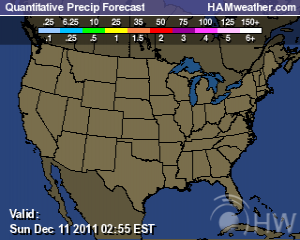Hurricane Katia Updated Track : East Coast Hit A Possibility
Some slow strengthening of Hurricane Katia is unlikely over the weekend, according to the National Hurricane Center (NHC).
Meanwhile, Katia is currently packing maximum sustained winds near 75mph (120kph), with higher gusts recorded on Saturday morning. Hurricane force winds extend outward up to 35 miles (55km) from the centre. Tropical Storm force winds extend outward of up to 175 miles (280 km), mainly to the north and east of the centre. The Category One hurricane, the second of the Atlantic Hurricane season (Jun-Nov) after Irene, is presently located approximately 900km to the northwest of Dominica, Antigua and Barbuda, Guadeloupe, Montserrat and Martinique, and other islands in the Leeward Islands chain. Forecast models also show that the hurricane will pass well to the north of Puerto Rico and the Leeward Islands, the northernmost islands of the Lesser Antilles chain of islands, during Sunday and Monday. Katia is “likely to cause life-threatening surf and rip current conditions” in the Lesser Antilles this weekend, the NHC said. Bermuda is likely to be placed on Hurricane or Tropical Storm Alert when Katia tracks northwest to the south of the island on Wednesday and Thursday. According to iWeather Online Senior Forecaster Peter O’Donnell: “Katia will pass to the north of the Lesser Antilles this weekend. The eventual track looks like being offshore between Bermuda and Cape Cod then past Newfoundland towards Iceland. Models show it meandering around the eastern Atlantic in about ten days.” O’Donnell indicated that the Katia could bring heavy rain and strong winds for Ireland and Britain. He said long Range weather models show the remnants of Hurricane Katia tracking very close to Donegal (Ireland) towards western Scotland around Monday 12 September. “The GFS model indicates that Katia’s strong circulation (post-tropical at that point, no doubt) could sweep across the northern two-thirds of Ireland bringing southwest to west gales — something to watch carefully next week (uncertainty is high even for the first five days of Katia’s track). This would coincide with the full moon, so any active weather around the 12th could bring unusually high tides to west or south facing coasts”, added O’Donnell.
Keep it here at Myweathertech.com for all the latest.





You must be logged in to post a comment Login